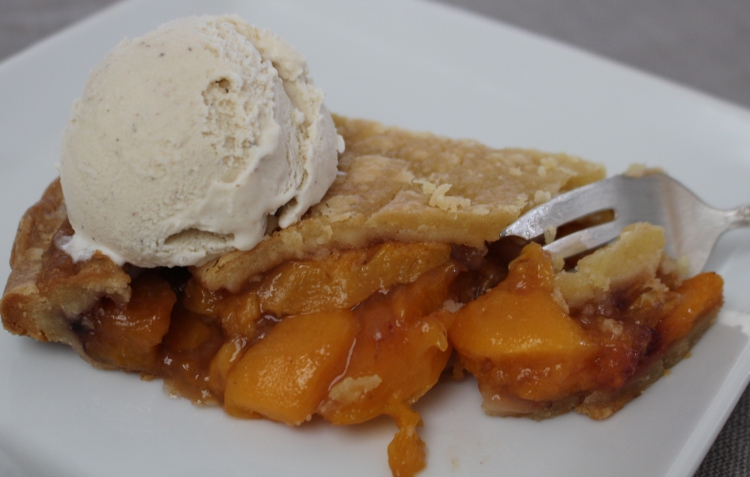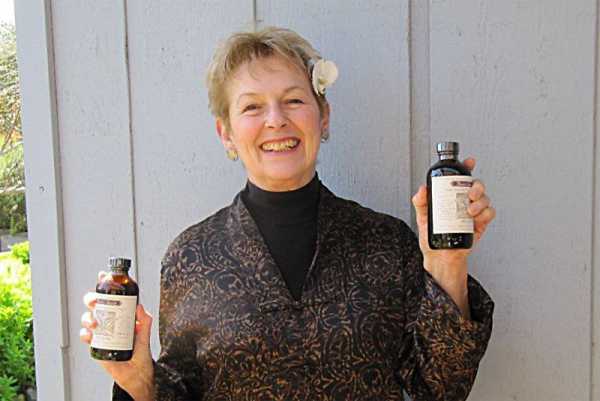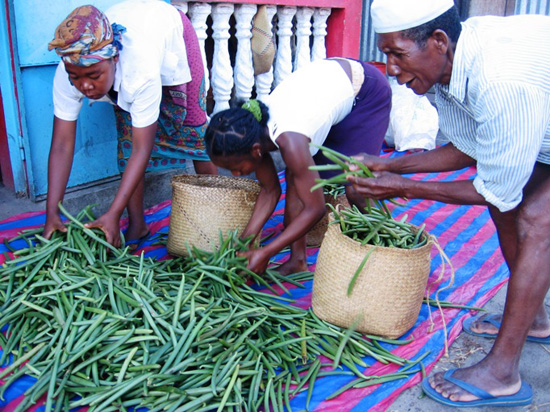
I'm amazed at how superior your vanilla is!
– Des, The Grommet
Food history is always fascinating. It’s like an archeology dig that you can then eat. My mother made Chicken Tetrazzini for dinner when I was growing up and it was a favorite of mine because it was the right kind of cozy on a cold, wet winter night. It’s an ideal recipe to use up leftover roasted or rotisserie chicken (or turkey), which was precisely why I just made it again for the first time in ages. It is also an incredibly wet, dreary February so it served as a useful way to warm my body and spirit as well as warming my kitchen and office thanks to the oven.
I became curious about the origin of Tetrazzini as it isn’t something you’d eat in Italy and the name Tetrazzini didn’t offer any clues, so I visited Wikipedia. It is indeed an American dish named for an Italian opera star, Luisa Tettrazini, famous at the beginning of the 20th century. It was widely believed to have been created by Louis Abargast in 1908 at the Palace Hotel in San Francisco. Other sources claim it came from the Knickerbocker Hotel in New York in 1908.
The original recipe resembles the recipe I’m sharing here though it was richer, typical of the era. It was made with chopped chicken or canned tuna in a cream sauce with mushrooms, pasta (spaghetti), sherry and Parmesan cheese (though some recipes listed other hard cheeses), then topped with almonds and bread crumbs, and browned in the oven.
My mother’s version had evolved some by then and wasn’t as rich as the original and used short pasta instead of spaghetti. Of course I’ve added my own spin on it by adding peas and suggesting baby spinach as well, though that’s optional (but a great way to add greens). You can also make it ahead and freeze it for up to a month before baking and serving, making it an affordable week night dish that you can make on the weekend about 40 minutes from start to finish. I froze some of my leftovers for a day like today where the rain has been coming down in a heavy, steady downpour.
[An amusing aside. I have been reluctant to take photos with recipes like this one in my 1962 Corning ware casserole dish because it seemed so, um, dated. Then it occurred to me that if David Lebovitz could serve recipes in his vintage finds from around France, I could certainly take pictures in this classic casserole dish that I received as a wedding gift. Just another reminder that, like the dish, I’m a bit of a relic.]
Print10 ounces mushrooms, sliced thin (about 4 cups)
5 tablespoons unsalted butter
1/4 cup unbleached all-purpose flour
1–3/4 cups full-fat milk
2 cups chicken broth
3/4 teaspoon Rain’s Choice pure Vanilla Extract
1/4 cup dry white wine or sherry
1 Package short pasta such as fusilli
3 cups coarsely chopped cooked chicken or turkey
1 cup cooked or frozen peas
1 cup freshly grated Parmesan cheese
Salt and pepper to taste
In a large heavy saucepan, cook the mushrooms in the butter over moderate heat, stirring, until most of the liquid they give off has evaporated. Remove mushrooms and set aside in a small bowl. Add another tablespoon of butter if needed, then stir in the flour, and cook the mixture over low heat, stirring, for 3 minutes. Add the milk, broth, and wine in a stream, turn up the heat, and bring the mixture to a boil, stirring constantly. Lower the heat and simmer the sauce for 5 minutes. Add vanilla, stir well, and turn off heat.
In the meantime, cook the pasta in salted water until it is al dente and drain it well.
In a large bowl combine the pasta, mushrooms, sauce, chicken, peas, and salt and pepper to taste, and mix well. Stir in 1/2 cup of the Parmesan, and transfer the mixture to a buttered shallow 3-quart casserole. Sprinkle top with balance of Parmesan cheese.
The Tetrazzini may be prepared up to this point 1 month in advance and kept frozen, covered. Bake the Tetrazzini in the middle of a preheated 375°F oven for 30 to 40 minutes, or until it is bubbling and the top is golden.
I was given a small bottle of Rain’s Choice in a gift basket and I have been hooked ever since. The flavor makes all of my baking so much better! I will never use grocery store vanilla again!


© 2021. All Rights Reserved
Designed/Developed by Kat & Mouse
2 Responses
Hello, vanilla queen! I’m surprised at putting vanilla extract in chicken tetrazzini or tortellini soup. Other than trying to promote your product, I know you are a believer in good recipes. Tell me what vanilla does for savory dishes such as these? I ask for greater understanding, and information only! Other than trying it for myself, help instruct me!
Thank you for your questions, Xenia. You bring up a question I’m sure lots of people wonder about.
In 1986 I wrote my first cookbook on vanilla. I was asked if vanilla could be used in anything other than sweets and some beverages. It honestly hadn’t occurred to me, so I began experimenting and was quite amazed by how incredibly under-utilized vanilla is as a flavor. Because vanilla has always been expensive, and because we know it as a good ingredient with sweet foods, with the exception of the French, who have paired vanilla with savory food for a long time, it remained pigeon-holed as a flavor for sweets.
In all honesty, I don’t always put vanilla in absolutely everything I make. That said, a number of years ago I posted a recipe and didn’t add vanilla to it. Almost immediately someone who read the recipe wrote to ask why there wasn’t vanilla in it, so I add it in all of the recipes and it’s up to the person making the recipe to decide whether or not to use it. The Tettrazini, on the other hand, has a Bechamel sauce and a little vanilla enhances the sauce.
Over the last 25 years or more, chefs and food professionals have experimented with flavors from around the world. We’ve expanded the parameters of taste to include umami, (a savory component). I use small amounts of soy sauce in recipes containing mushrooms, legumes, and other savory foods to emphasize the underlying umami. Most recently, “starchy” has been added to “taste” based on rice in Asian cultures and taro and manioc in Pacific Island and Latin American cultures.
Years ago I wrote the following as a handout when I spoke at events and posted it on my site when I launched online in 2001. I wrote it mainly to help readers understand that vanilla, like so many plants, have medicinal as well as culinary properties.